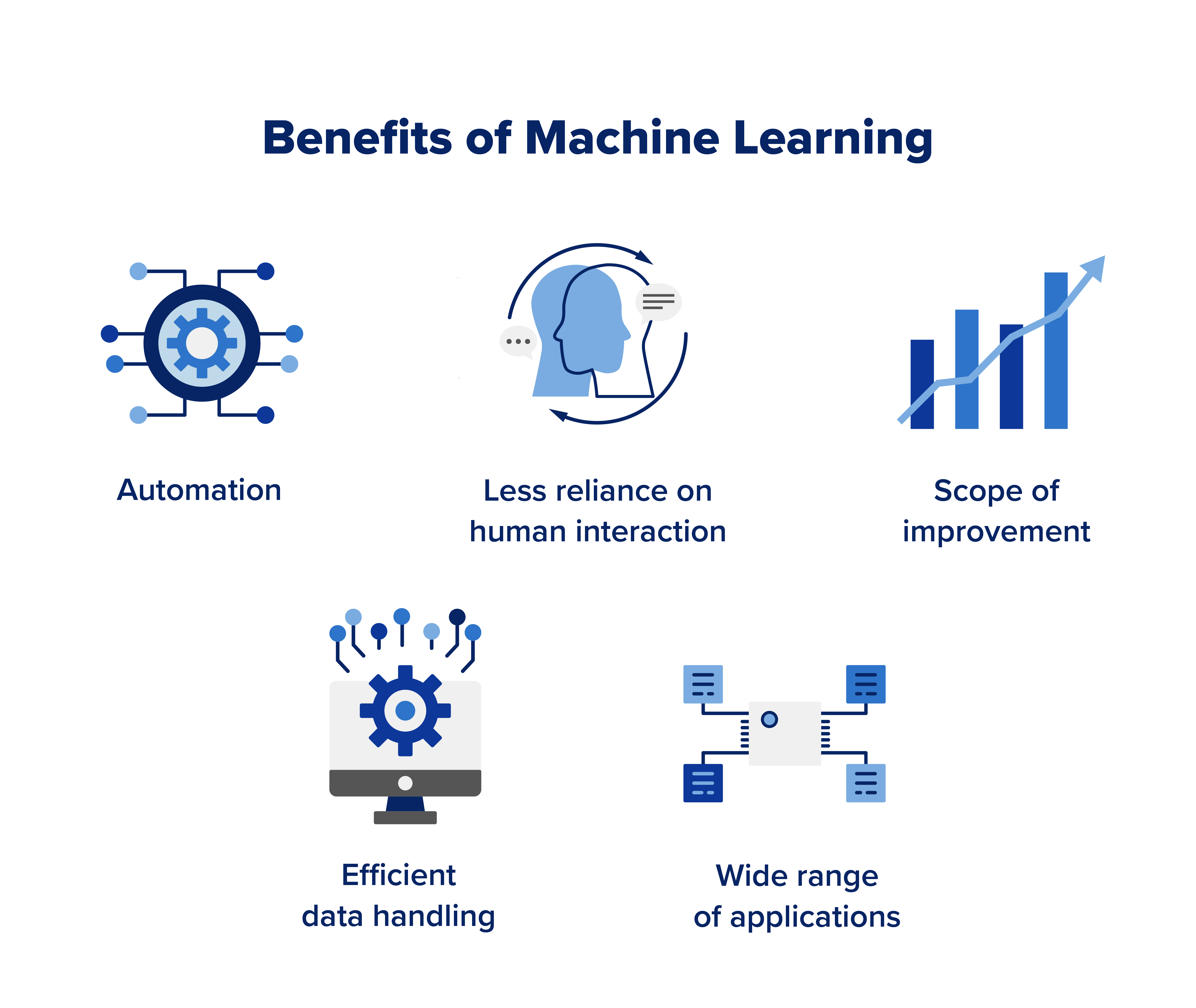You likely benefit from machine learning multiple times a day — even if you’re not familiar with the specifics involved. For instance, you rely on machine learning when you use a maps app on your smartphone to get to a friend’s house, or when you ask Siri to play your favorite song one more time. Simply put, machine learning is a field of artificial intelligence that uses data to develop, train, and refine algorithms so they can make predictions or decisions with minimal human intervention.
Machine learning is a rapidly growing field within the technology industry, as well as a point of focus in companies across industries. Given the high demand for machine learning skills in the current job market, understanding the fundamentals can provide a promising pathway for anyone considering a job in tech, or even those looking to change careers.
How Does Machine Learning Work?
The goal of machine learning is to make computers (i.e. machines) learn from experience. This happens through the use of algorithms, which use computational methods to “learn” information directly from data sets. As the available data grows, the algorithms improve their accuracy and performance.
Because machine learning is used across a variety of industries, your areas of interest will dictate how you choose to learn it: Columbia Engineering FinTech Boot Camp, for example, teaches machine learning in finance. Interested in data science? Machine learning is a crucial data analytics skill needed to qualify for in-demand roles. In this article, we will explore how machine learning works in six industries: finance, business, genetics and genomics, healthcare, retail, and education.
Types of Machine Learning
There are three primary techniques used in machine learning: supervised learning, unsupervised learning, and reinforcement learning. Out of the three, supervised learning is the most popular — it trains a model to predict future outputs based on existing input and output data, similar to using flash cards as a teaching method. First, pairs of inputs and outputs are introduced to an algorithm. Over time, the algorithm learns the nature of the input-output relationship to predict an output from a new input. One real-life example of this is your email spam filter — it learns what spam looks like (input), and then learns to separate spam from other mail (output).
Unsupervised learning is quite different. Rather than pre-selecting a preferred output for the algorithm, the algorithm is fed a data set and given the tools to understand its properties. From there, it finds hidden patterns in input data and can then learn to organize the data in logical ways that can help better analyze the set. An example of this is the “recommended” section you might see on a streaming service: the website assesses its videos for length, topic, and other categories, and then uses data on what you’ve watched in the past to make a recommendation for what you should watch in the future.
Reinforcement learning trains a machine through reinforcement mechanisms — similar to the classical conditioning employed by Ivan Pavlov to induce drooling in dogs at the sound of a bell. A reinforcement learning system in its early stages will make many mistakes. However, over time, the machine receives signals denoting error or accuracy and learns from its mistakes to be more successful.

 Live Chat
Live Chat
